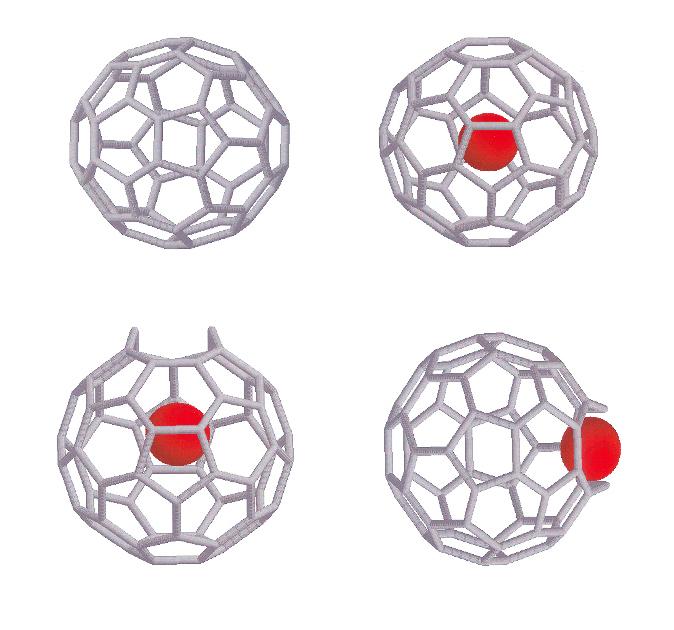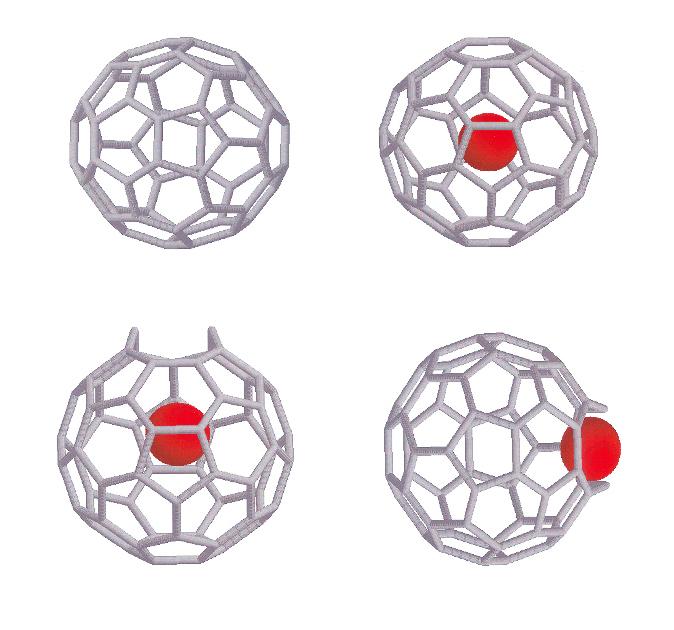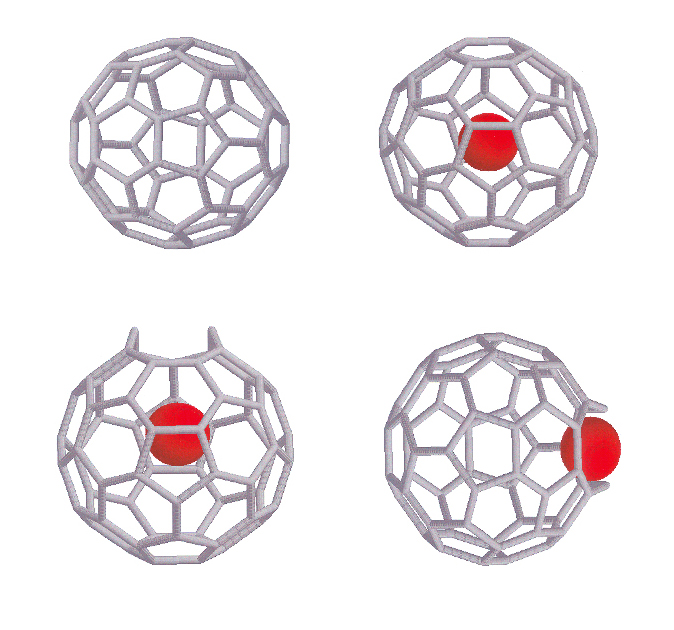A special carbon molecule known as a buckyball has been used to trap a water molecule and observe its ‘quantum rattle.’
C60 Buckminsterfullerene has a round, cage-like structure composed of 20 hexagons and 12 pentagons. The tiny cavity inside forms a ‘nanolaboratory’ for studying the quantum mechanical principles that determine the motion of the caged molecule.
An international research team worked together to develop and apply the synthetic chemistry technique. Japanese scientists used molecular surgery to seal the water molecule inside C60.
English researchers then studied the trapped molecule’s behavior using a neutron beam.
“This technique succeeds in combining perhaps the universe’s most beautiful molecule C60 with its simplest,” said Tony Horsewill at the University of Nottingham in a press release.
Horsewill believes the achievement may have unforeseen applications, including advanced molecular electronics.
“Indeed, in the case of water molecules inside buckyballs, we have a guest molecule that possesses an electric dipole moment, and the collaboration is already investigating its use in molecular electronics, including as an innovative component of a molecular transistor.”
Trapping the water molecules this way creates a controlled environment for studying them and the wave-particle duality of matter.
“Under these conditions, the confined molecules reveal a wave-like nature and behave according to the laws of quantum mechanics,” said Malcolm Levitt at the University of Southampton in the release.
“Apart from their intrinsic interest, we expect that the special properties of these materials will lead to a variety of applications, such as new ways to brighten the images of MRI scans, and new types of computer memory.”
The findings were published in Proceedings of the National Academy of Sciences on Aug. 7.
The Epoch Times publishes in 35 countries and in 19 languages. Subscribe to our e-newsletter.





